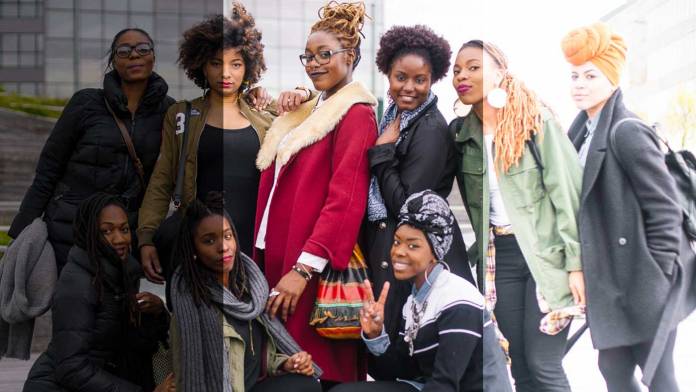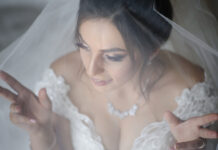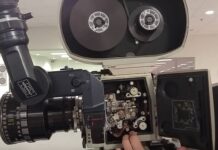“Exposure” is the amount of light that hits the photo-sensitive element in a camera. Exposure controls the gradations of brightness you see on your screen – most consumer digital video cameras support 100 gradations between light and dark. (Your eye can distinguish about 10,000 gradations, and film can distinguish about 1000.)
In a properly-exposed shot, no level of brightness will go above 100 (absolute white) or below 0 (blackest black). Videographers refer to brights or darks out of this range as “clipping.” This means that any values greater than 100 or less than 0 have the values of 100 and 0. So, you lose detail because there is no differentiation in the various brightness values.
Keeping the light hitting the sensor between 0 and 100 is “proper” exposure. If too many values approach 100, your image is over-exposed (too bright), and when the values approach 0, it’s under-exposed (too dark). When a camera has a histogram feature, you can see this in real-time. You want to see one with no spikes running off the edges.
Letting the camera set the exposure
Many modern cameras have program modes in which the camera sets all the variables necessary to expose a shot. In many circumstances, the cameras are pretty good. If the lighting scheme is not too difficult, they’re very often correct.
Many people, in fact, leave their cameras on program, not even realizing that there are other modes. This doesn’t always work for difficult lighting situations. There may be times when you want the camera to perform in a particular way.
There are three typical ways to control exposure
Shutter Speed
Film cameras have a physical shutter that opens and closes, allowing light to land on the film. Modern video cameras have no actual shutter. Often the photo-sensitive chip is made sensitive and insensitive (like a tape recorder that’s turned off, not like a bad boyfriend) by flicking a “switch.”
The chip can be sensitive and collect light for a long period of time – “slow” shutter speed, maybe 1/8th of a second – or it can be sensitive and collect light for a very brief period of time, maybe 1/500th of a second. Each of these has its advantages and disadvantages. A fast shutter speed looks jittery if you’re videotaping rapid sports action because you have a 1/500th-second image every 30th of a second. On the opposite end of the spectrum, slower shutter speeds can make rapid motion look blurry.
Aperture
The aperture is a ring behind the lens that opens and closes (making a larger or smaller hole) to allow more or less light through the lens. The wider the hole, the more light that gets in. So, large apertures let more light in, while small apertures allow less light in.
The aperture also is key in determining the depth of field, which is the area that is in focus. Large apertures give a shallow depth of field, maybe enough to have a person’s head in focus and the area behind blurry. Small apertures give a deep depth of field, which may keep a person and the background in focus at the same time. There are reasons for choosing a deep or shallow depth of field when setting up a shot. It all depends on how you want it to look in the final product.
Element sensitivity (“film speed”)
“Film speed” on movie cameras equates to “gain control” in video. The “gain” controls electronically how sensitive the CCD is: the higher the gain, the more sensitive the element and the less light that needs to hit it in order to register. With gain, like film speed, come problems – the higher the gain, the larger the grain.
Secret weapon: hand me my shades!
There is another way to control exposure – blocking the amount of light that gets to the camera. You normally do this with ND or neutral-density filters. These act like sunglasses and cut back on the amount of light getting to the lens, without changing the colors. These can be very useful if you want to have a wide aperture in bright sunlight.
Another type of ND filters is “graduated” ND filters, which start out dark at the top and fade to clear at the bottom. These can darken a bright sky without affecting the rest of the image (too much). One problem with graduated filters is that they want a straight horizon; anything that protrudes will also darken.
The fifth element: let there be light
Since video doesn’t handle contrast very well, another thing you can do if you have dark and bright elements is to throw extra light onto the dark subject to raise the dark values closer to the highest bright ones. Get out some lights or a reflector and light the person on the beach so that her darkest color value is closer to the beach’s darkest color value. This will help keep the contrast difference in that magic number of 100 values.
Conclusion
Multiple variations of shutter speed/gain/aperture will give you the proper exposure. Depending on what you’re shooting and how you want it to look, you’ll need to know how to adjust these three values in order to get the ones that benefit your shot – whether it be action-freezing sports or a light night cow-tipping excursion.*
*We do not endorse cow tipping. It annoys the cows, it’s dangerous, it’s trespassing and you’ll step in something.
Contributing editor Kyle Cassidy is a visual artist who writes extensively about technology.








